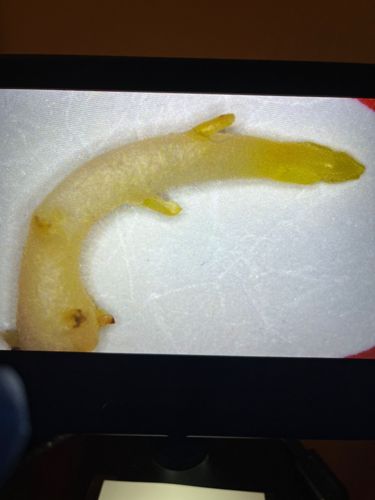Rat-tailed maggot (larva of drone fly)
Scientific Name: Eristalis tenax (larva)
Order & Family: Diptera, Syrphidae
Size: Larvae can range from 10 to 30 mm (0.4 to 1.2 inches) in length, not including the tail.

Natural Habitat
Aquatic environments with decaying organic matter, such as stagnant water, ponds, sewage lagoons, and manure pits.
Diet & Feeding
Feeds on decaying organic matter, microorganisms, and detritus in its aquatic habitat.
Behavior Patterns
The most distinctive behavior is the use of its long, retractable 'tail' (siphon) as a breathing tube, which it extends to the water's surface to obtain oxygen. It moves slowly through the mud or decaying matter at the bottom of its habitat. It undergoes complete metamorphosis, eventually pupating in drier soil or debris near its aquatic home before emerging as an adult drone fly.
Risks & Benefits
Generally considered beneficial as a decomposer, helping to break down organic waste. However, in rare cases of severe unsanitary conditions, accidental myiasis (infestation of living tissue) in humans or other animals can occur if the larvae are ingested, though this is very uncommon and often mild. Adult drone flies are important pollinators of flowers and crops.
Identified on: 9/18/2025